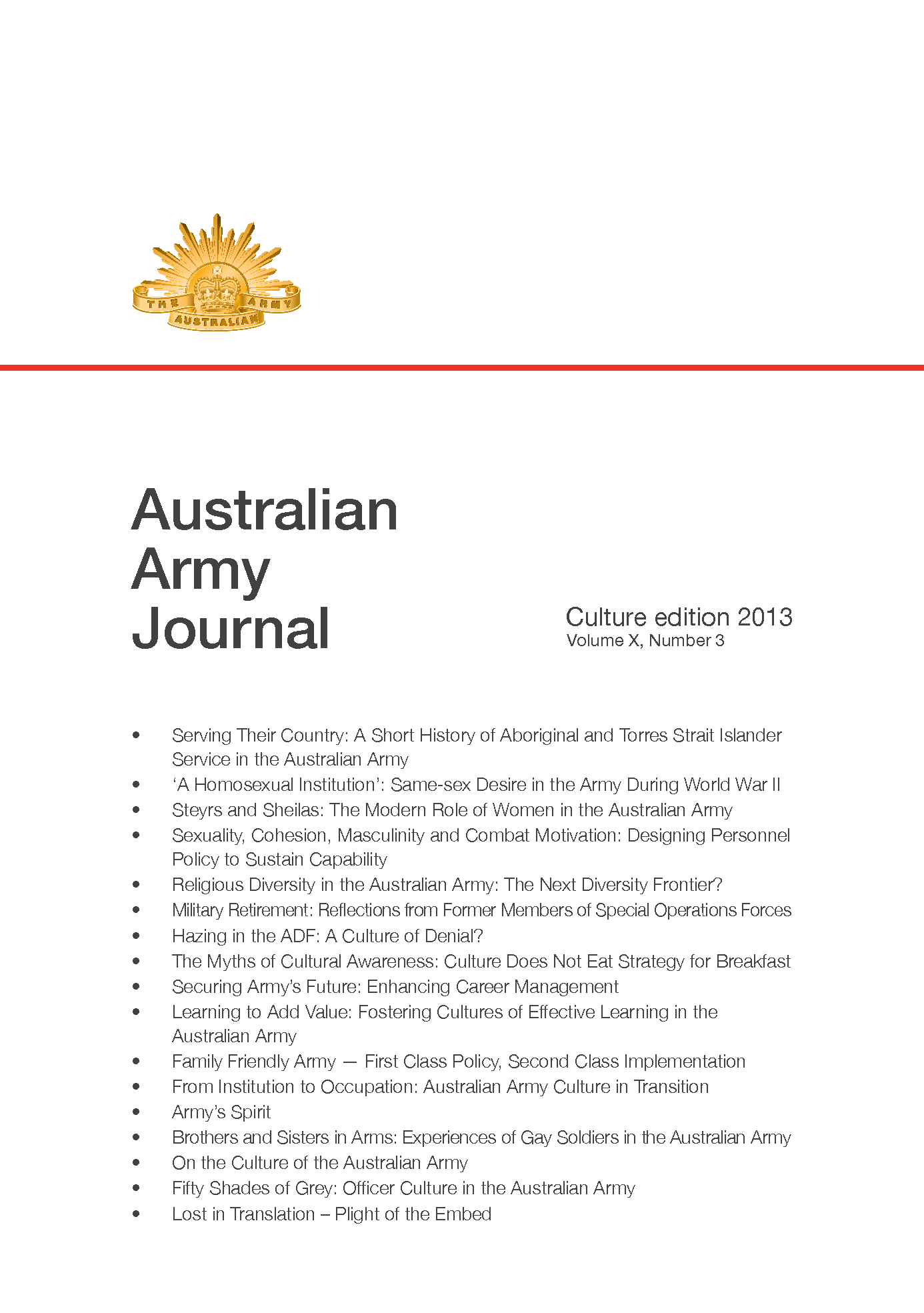When I assumed command of the Australian Army in June 2011, I set myself three broad areas that I wanted focus on during my tenure. That was not to limit the host of issues that come across my desk in the course of a working week, but I wanted to have my command team know that, above all else, these matters would demand my attention and, as a consequence, their focus.
The first area was, is, and always will be, support to our soldiers on operations. The preparation prior to deployment, the training that underscores it and the rapid introduction into service of equipment to support our people is world class. It has been achieved through great commitment and dedication by soldiers, public servants and industry. There is much we can be proud of in what has been achieved and I can assure you that I will continue to seek improvement because it is our most essential task.
The second area of focus was on developing an Army with a viable and affordable force structure, with all of its essential capabilities. The aim is to ensure that Army is a robust and relevant force, capable of defending Australia and its interests well into the third decade of this Century. That is what Plan Beersheba is all about. It makes the case as to what is required to maintain essential capability within Army, and how that will be achieved with real and enduring resource efficiency. It is not a panacea for all of our force structure challenges, but it is a foundation for our future and I am very proud of the great work that has been done by many people at all rank levels to get us to this point.
The third area was focussed on our workforce and, back in July 2011, I framed my thinking around the care of our wounded and ill, and on how we lived to our Army ethos.
While we still have a way to go, especially in treating and supporting those with the mental scars of military service, I feel that we have made tangible headway in the care of our wounded and ill. However, I will be frank in saying that I did not expect to spend as much time as I have in examining and evaluating the culture and values of our Army.
Reasonably, I saw that as a well established feature of our organisation and, while I knew that there would be behavioural matters to address, I did not expect that what I said in this regard would arouse so much interest and comment, both inside and outside the Army. Subsequent events have proved that I was mistaken in this.
I don’t want any misunderstanding here. Our performance on operations since 1999 has been in the finest traditions of the Australian soldier. We have produced tough, resilient and innovative soldiers who have displayed courage in battle, while being able to treat the vulnerable with compassion. This record confirms that our individual training systems and our values work.
However, there is also undeniable evidence that the same warrior culture that has built our small teams, and equipped them to withstand the shock of combat, has been distorted by some people and used to justify bullying, harassment and intimidation.
Furthermore, the arguments that such behaviour are the preserve of a ‘few bad apples’ just doesn’t stack up. There have been too many scandals, and too many disappointed families who have felt betrayed that their sons and daughters had enlisted in the Australian Defence Force only to be treated badly.
The ‘bad apple’ concept has been the comforting cliché that we have relied on for too long to justify manifest failures of Army to provide a decent environment for all of its people to achieve their potential and make a contribution to this Country.
In no way am I arguing for a lowering of our rigorous standards. My number one area of focus is on providing the best Army for operations. However, over my 35 years of service, no one has looked me in the eye and explained how our great core value of ‘mateship’ justifies bullying a fellow soldier on account of his or her gender, sexuality, religion or ethnicity. After 13 separate inquiries into various aspects of our treatment of our people within the last 15 years, I am committed to facing up to this issue in the most open and honest way we can.
One of the best ways to achieve this is to facilitate analysis and discussion on matters of Army’s culture. That is the purpose of this edition of the Army Journal. Take the time to read it, and to discuss these issues with one another and your leaders at every level. This is how healthy organisations prosper.
I am most certainly not asking that you agree with all that is expressed in this edition. That is not the point. What I am looking for is an open and respectful exchange of views that goes to the heart of what makes us the great national institution I know we are.
I commend the Journal to you. Good luck and good soldiering.

